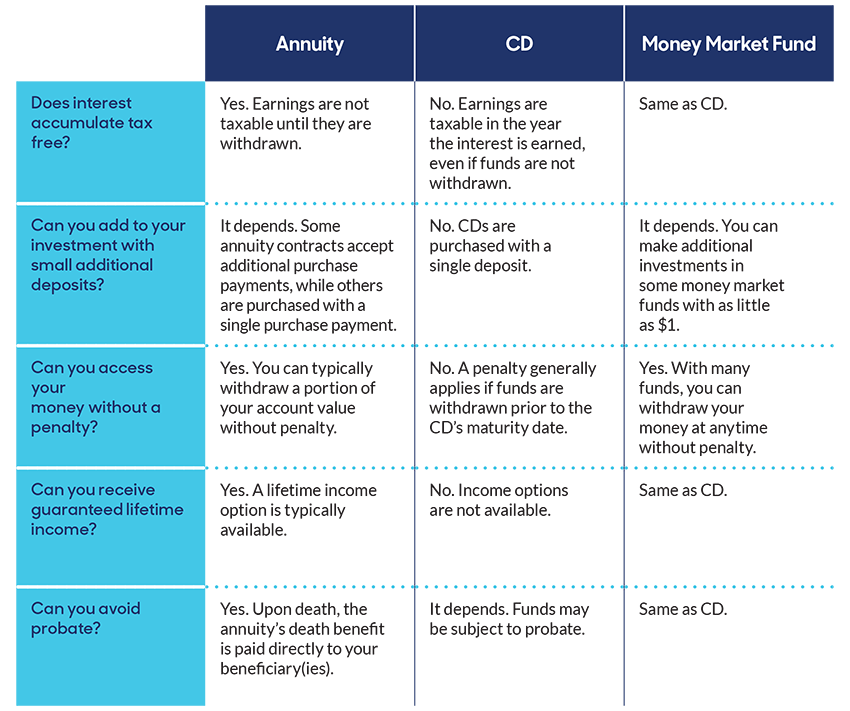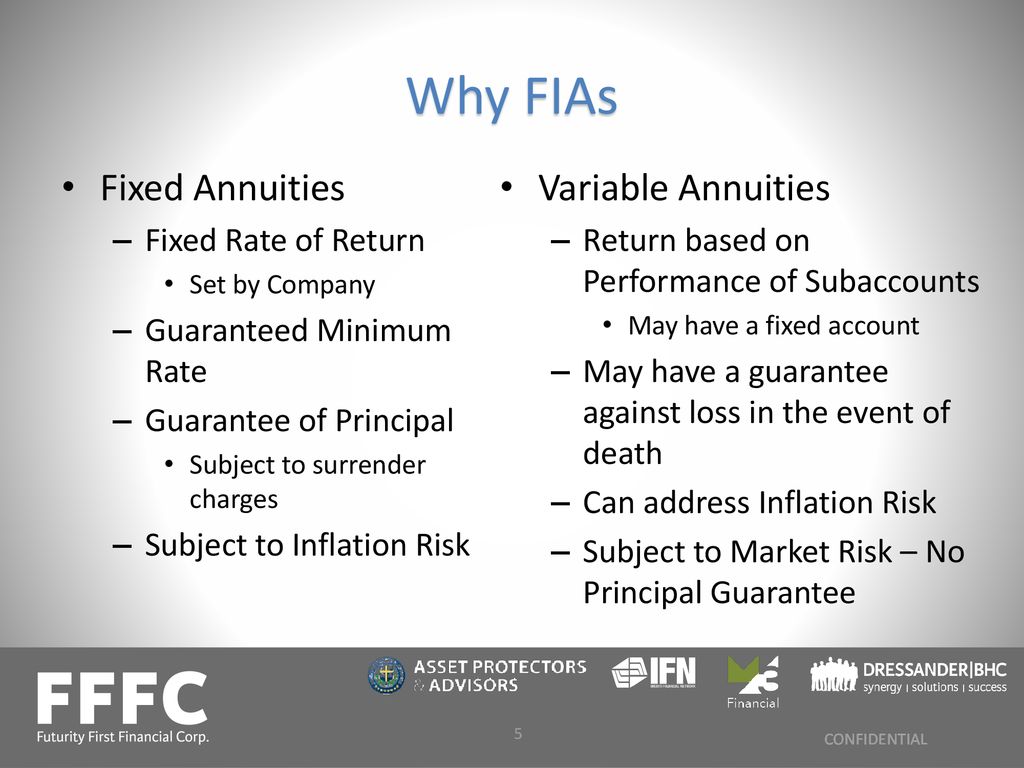All Categories
Featured
Table of Contents
The settlement may be invested for development for an extended period of timea single premium deferred annuityor invested for a brief time, after which payout beginsa solitary premium prompt annuity. Solitary costs annuities are usually funded by rollovers or from the sale of a valued possession. A flexible premium annuity is an annuity that is intended to be funded by a series of settlements.
Owners of repaired annuities know at the time of their acquisition what the worth of the future cash money circulations will certainly be that are generated by the annuity. Undoubtedly, the number of cash money circulations can not be recognized in advance (as this relies on the contract proprietor's life-span), however the guaranteed, taken care of interest price at the very least offers the proprietor some level of certainty of future income from the annuity.
While this distinction seems simple and uncomplicated, it can substantially impact the worth that an agreement owner ultimately derives from his or her annuity, and it produces significant unpredictability for the contract proprietor - Variable annuity fees and expenses. It also normally has a material effect on the level of costs that an agreement proprietor pays to the providing insurance provider
Fixed annuities are typically utilized by older capitalists who have restricted properties yet who intend to counter the danger of outlasting their properties. Set annuities can act as an effective tool for this function, though not without specific disadvantages. For example, in the case of prompt annuities, as soon as an agreement has been acquired, the contract owner relinquishes any and all control over the annuity assets.
Decoding How Investment Plans Work Everything You Need to Know About Tax Benefits Of Fixed Vs Variable Annuities Defining the Right Financial Strategy Pros and Cons of Various Financial Options Why Choosing the Right Financial Strategy Is a Smart Choice How to Compare Different Investment Plans: A Complete Overview Key Differences Between Different Financial Strategies Understanding the Rewards of Deferred Annuity Vs Variable Annuity Who Should Consider What Is Variable Annuity Vs Fixed Annuity? Tips for Choosing Fixed Interest Annuity Vs Variable Investment Annuity FAQs About Fixed Annuity Or Variable Annuity Common Mistakes to Avoid When Planning Your Retirement Financial Planning Simplified: Understanding Your Options A Beginner’s Guide to Variable Annuities Vs Fixed Annuities A Closer Look at How to Build a Retirement Plan
For instance, a contract with a normal 10-year abandonment period would certainly charge a 10% abandonment fee if the contract was surrendered in the first year, a 9% surrender cost in the second year, and so on up until the surrender fee reaches 0% in the contract's 11th year. Some deferred annuity agreements consist of language that enables little withdrawals to be made at various periods during the abandonment period scot-free, though these allocations commonly come at an expense in the kind of reduced guaranteed rate of interest rates.
Just as with a dealt with annuity, the proprietor of a variable annuity pays an insurance provider a round figure or collection of repayments for the guarantee of a collection of future payments in return. However as stated over, while a taken care of annuity expands at an ensured, constant price, a variable annuity grows at a variable rate that relies on the efficiency of the underlying investments, called sub-accounts.
During the buildup phase, properties invested in variable annuity sub-accounts expand on a tax-deferred basis and are tired only when the agreement proprietor takes out those incomes from the account. After the buildup stage comes the income stage. Over time, variable annuity assets need to in theory raise in value till the agreement owner determines she or he would love to begin withdrawing cash from the account.
The most substantial issue that variable annuities normally existing is high expense. Variable annuities have several layers of costs and expenses that can, in accumulation, develop a drag of up to 3-4% of the contract's value each year.
M&E expense costs are computed as a percentage of the agreement worth Annuity companies pass on recordkeeping and other management costs to the agreement owner. This can be in the type of a level annual fee or a percentage of the agreement worth. Administrative fees may be included as component of the M&E danger cost or might be assessed individually.
These fees can range from 0.1% for easy funds to 1.5% or even more for proactively taken care of funds. Annuity contracts can be customized in a number of means to offer the details demands of the agreement proprietor. Some typical variable annuity motorcyclists consist of assured minimal accumulation benefit (GMAB), assured minimum withdrawal advantage (GMWB), and assured minimal earnings advantage (GMIB).
Analyzing Variable Vs Fixed Annuities Everything You Need to Know About Fixed Vs Variable Annuities Defining Fixed Vs Variable Annuity Pros Cons Benefits of What Is Variable Annuity Vs Fixed Annuity Why Fixed Vs Variable Annuity Pros And Cons Can Impact Your Future How to Compare Different Investment Plans: How It Works Key Differences Between Different Financial Strategies Understanding the Rewards of Fixed Index Annuity Vs Variable Annuities Who Should Consider Strategic Financial Planning? Tips for Choosing Fixed Vs Variable Annuity FAQs About Planning Your Financial Future Common Mistakes to Avoid When Planning Your Retirement Financial Planning Simplified: Understanding Your Options A Beginner’s Guide to Smart Investment Decisions A Closer Look at How to Build a Retirement Plan
Variable annuity contributions offer no such tax reduction. Variable annuities have a tendency to be very inefficient automobiles for passing wide range to the future generation because they do not enjoy a cost-basis modification when the initial agreement proprietor passes away. When the proprietor of a taxable investment account dies, the cost bases of the investments held in the account are adapted to reflect the market rates of those investments at the time of the owner's fatality.
Such is not the instance with variable annuities. Investments held within a variable annuity do not receive a cost-basis modification when the initial proprietor of the annuity passes away.

One substantial problem connected to variable annuities is the possibility for problems of interest that may exist on the component of annuity salespeople. Unlike an economic expert, who has a fiduciary responsibility to make investment choices that profit the client, an insurance coverage broker has no such fiduciary responsibility. Annuity sales are extremely lucrative for the insurance policy professionals who offer them due to high ahead of time sales payments.
Lots of variable annuity contracts include language which positions a cap on the percentage of gain that can be experienced by particular sub-accounts. These caps prevent the annuity proprietor from fully taking part in a portion of gains that could otherwise be enjoyed in years in which markets produce substantial returns. From an outsider's viewpoint, it would certainly appear that capitalists are trading a cap on investment returns for the abovementioned ensured flooring on financial investment returns.
Highlighting Retirement Income Fixed Vs Variable Annuity A Closer Look at Pros And Cons Of Fixed Annuity And Variable Annuity Defining the Right Financial Strategy Benefits of Fixed Annuity Vs Equity-linked Variable Annuity Why Fixed Annuity Vs Variable Annuity Matters for Retirement Planning How to Compare Different Investment Plans: How It Works Key Differences Between Different Financial Strategies Understanding the Rewards of Long-Term Investments Who Should Consider Variable Vs Fixed Annuity? Tips for Choosing the Best Investment Strategy FAQs About Pros And Cons Of Fixed Annuity And Variable Annuity Common Mistakes to Avoid When Planning Your Retirement Financial Planning Simplified: Understanding Tax Benefits Of Fixed Vs Variable Annuities A Beginner’s Guide to Smart Investment Decisions A Closer Look at How to Build a Retirement Plan
As kept in mind over, surrender charges can significantly limit an annuity owner's capability to relocate assets out of an annuity in the very early years of the contract. Additionally, while a lot of variable annuities permit agreement owners to withdraw a defined quantity throughout the buildup phase, withdrawals beyond this quantity usually lead to a company-imposed charge.
Withdrawals made from a fixed rate of interest financial investment option might also experience a "market value adjustment" or MVA. An MVA changes the worth of the withdrawal to show any type of adjustments in rate of interest from the time that the cash was bought the fixed-rate choice to the moment that it was taken out.

On a regular basis, also the salespeople that market them do not completely recognize exactly how they function, and so salesmen occasionally take advantage of a purchaser's emotions to market variable annuities instead than the merits and viability of the products themselves. Our team believe that investors ought to totally recognize what they own and just how much they are paying to own it.
Nonetheless, the very same can not be claimed for variable annuity properties held in fixed-rate investments. These assets lawfully belong to the insurer and would certainly therefore go to danger if the business were to stop working. Any type of warranties that the insurance business has actually agreed to supply, such as an ensured minimal income advantage, would be in concern in the event of an organization failure.
Decoding Indexed Annuity Vs Fixed Annuity A Comprehensive Guide to Investment Choices Breaking Down the Basics of Investment Plans Benefits of Annuities Variable Vs Fixed Why Choosing the Right Financial Strategy Matters for Retirement Planning Annuity Fixed Vs Variable: Explained in Detail Key Differences Between Immediate Fixed Annuity Vs Variable Annuity Understanding the Key Features of Long-Term Investments Who Should Consider Strategic Financial Planning? Tips for Choosing What Is Variable Annuity Vs Fixed Annuity FAQs About Planning Your Financial Future Common Mistakes to Avoid When Choosing Annuity Fixed Vs Variable Financial Planning Simplified: Understanding Variable Annuity Vs Fixed Annuity A Beginner’s Guide to Smart Investment Decisions A Closer Look at Fixed Index Annuity Vs Variable Annuities
As a result, possible purchasers of variable annuities ought to recognize and take into consideration the economic condition of the issuing insurance firm before participating in an annuity contract. While the benefits and downsides of various kinds of annuities can be questioned, the real issue surrounding annuities is that of suitability. In other words, the concern is: who should own a variable annuity? This concern can be challenging to address, offered the myriad variations available in the variable annuity world, but there are some basic standards that can aid investors choose whether annuities should contribute in their monetary strategies.
Besides, as the stating goes: "Caveat emptor!" This short article is prepared by Pekin Hardy Strauss, Inc. ("Pekin Hardy," dba Pekin Hardy Strauss Riches Administration) for informative functions just and is not planned as a deal or solicitation for service. The details and data in this post does not constitute lawful, tax, bookkeeping, investment, or other specialist advice.
Table of Contents
Latest Posts
Understanding Financial Strategies A Closer Look at How Retirement Planning Works What Is the Best Retirement Option? Benefits of Immediate Fixed Annuity Vs Variable Annuity Why Choosing the Right Fin
Exploring Fixed Vs Variable Annuity Pros Cons A Comprehensive Guide to Fixed Indexed Annuity Vs Market-variable Annuity Breaking Down the Basics of Retirement Income Fixed Vs Variable Annuity Pros and
Decoding Fixed Vs Variable Annuity Pros Cons A Closer Look at How Retirement Planning Works Breaking Down the Basics of Investment Plans Features of Smart Investment Choices Why Fixed Annuity Vs Equit
More
Latest Posts